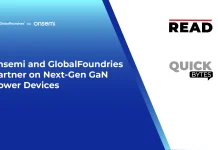Resonac Corporation has developed a temporary bonding film to be used for supporting a wafer on a glass carrier temporarily in the semiconductor device fabrication process (front-end process) and semiconductor packaging process (back-end process), as well as its debonding process. This debonding process uses xenon (Xe) flash light irradiation to debond the wafer or package from the carrier and can be applied from wafer level to panel level processing. It also should be noted that Debonding is completed in a shorter time as compared to the conventional laser ablation method without producing foreign substances such as soot. This technology has been patented in Japan, the United States, Korea, China, and Taiwan region.*
Resonac is looking for development partners to establish a new debonding process, as well as to market the new temporary bonding film.
In the front-end and back-end processes of advanced semiconductors, wafers and chips are temporarily bonded to a glass carrier with a temporary bonding material to improve workability. After various fabrication processing, the wafers or packages are debonded from the carrier along with the temporary bonding material. Therefore, the performance of the temporary bonding material must be compatible with all fabrication processes, and the residual temporary bonding material must be easily removed. Additionally, debonding process must be completed in a short time without damaging them to achieve high yield and productivity. Furthermore, even the back-end process is now required to be as clean as the front-end process. Therefore, the soot which is generated by the conventional laser ablation debonding method has not been preferable.
Also Read: Syntiant Acquires Knowles’ MEMS Microphone Division
Resonac’s temporary debonding film with high heat resistance and chemical resistance exhibits sufficient adhesion performance when wafers and packages are temporarily supported on the carrier. Once they are debonded from the carrier, the film can be removed easily by peeling at room temperature without any residues. The process for debonding the wafer from the carrier adopts Xe flash light irradiation, which allows for large-area batch irradiation and instantaneous high energy output. Instant deformation induced by locally heating a metal layer on the glass carrier with Xe flash light irradiation enables quick debonding of wafers and packages without applying heat or mechanical stress. In addition, as the debonding mechanism is not related to resin decomposition, this method has the advantage of being a clean process that does not generate any foreign substances, such as soot generated during laser ablation.
Resonac believes that this temporary bonding film and new debonding method are suitable for the fabrication process for memory, logic, and power semiconductors as well as advanced semiconductor packages.
SOURCE: Businesswire




